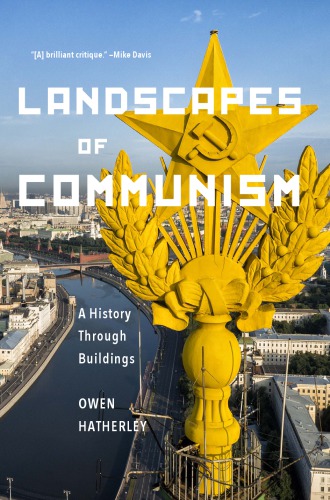
Landscapes of Communism
A History Through Buildings
کتاب های مرتبط
- اطلاعات
- نقد و بررسی
- دیدگاه کاربران
نقد و بررسی

February 8, 2016
Hatherley (Militant Modernism), an erudite writer, offers a staggeringly detailed look at the buildings and urban designs of the Soviet Union, its eastern European client states, and, as a bit of an afterthought, China—“the only explorable legacy” of a political system that’s been largely gone for more than 25 years. This hefty, densely researched volume is not for beginners. Hatherley acknowledges up front the inextricable ties of buildings and the economic system under which they are created, and he vows an honest examination of the buildings that remain after the regimes that constructed them have crumbled. The pages are laced with architectural descriptions and the names of architects long consigned to the scrap heap of history. Some of this is fascinating (particularly a chapter devoted to the Moscow metro and a few other East Bloc underground rail systems, highlighting the art, design, and political theory of a Communist society), but the exhaustive examinations of buildings include very little of the human dimension of the society that brought them into being. The chapter on Communist-era memorials and monuments is instructive and interesting, but in taking on these public commemorations in mainly architectural terms, he fails to incorporate newer societies that would help explore the meaning behind them, and the failure of those societies to care for the people who lived in the buildings they built. B&w photos.

December 15, 2015
An erudite and surprising study of what Soviet-era buildings said about the beliefs and hopes of the citizens. British author and journalist Hatherley (A Guide to the New Ruins of Great Britain, 2010, etc.) debunks much of what the West categorizes as "Soviet architecture"--i.e., monumental, monolithic, totalitarian, and repetitive, such as massive rows of housing blocks. In this fresh look at many former communist cities in the Soviet camp, including Warsaw, Vilnius, Kiev, Belgrade, and Berlin, as well as Moscow and Leningrad, Hatherley plots a "zigzag" journey through the Communist architectural mindset. The author explores the period of 1917 until about 1930, when modernism was dominant in social democratic capitals like Berlin, Prague, and Vienna, and when the experiment in high-density, inner-urban "superblocks" became the Soviet model. Hatherley also chronicles the early 1930s to the 1950s, when modernism was discarded as "inhuman, technocratic, tedious, repetitious, constricting," replaced by appeals "to tradition, history, ornament, hierarchy, beauty--the city as a composition, not as repetition." Above all, Hatherley seizes the sense of utopian vision the communists sought. The Soviet model drew on the grand urban planning of Baron Haussmann, favoring compositions that were "strongly centralized," and top-down. The author, whose love affair with a Polish woman propelled him to visit these sights and buildings himself, organizes his fascinating travels thematically, around the kinds of structures the communists built reflecting their uses: the magistrale, the series of grand boulevards needed for the military parade route; the "microrayon," or system of housing units that the author considers a valiant attempt at providing housing for everyone; high buildings, TV towers, and so on; the marvelous metros (about which Hatherley writes eloquently); memorials such as the Lenin Mausoleum; and the improvised sites prompted by the people themselves. A wonderfully accessible, compelling guide to these Eastern European cities.
COPYRIGHT(2015) Kirkus Reviews, ALL RIGHTS RESERVED.




















![Design Like You Give a Damn [2]](https://dl.bookem.ir/thumbnails/150/ISBN13/9781613122860.jpg)




دیدگاه کاربران